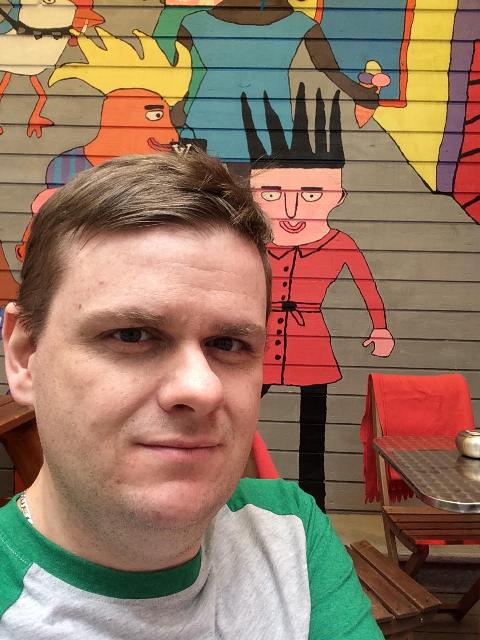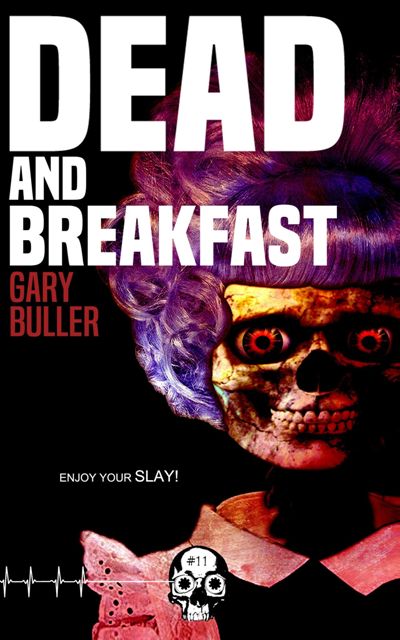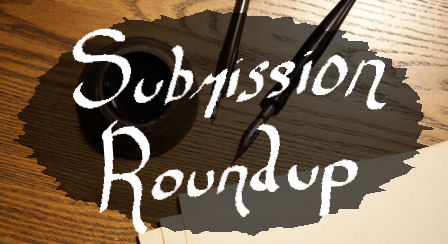Welcome back! Today I’m excited to feature writer Gary Buller. Gary is the author of Dead and Breakfast as well as numerous short stories.
Recently, Gary and I discussed his inspiration as an author as well as his latest work and how he’s writing his way through 2020.
A couple icebreakers to start: when did you decide to become a writer, and who are some of your favorite authors?
I started ‘writing to submit’ around 2016, pretty late to the game at 34 years old. Until that point, I’d barely written a paragraph of fiction since leaving college. I was inspired by the story of a friend of a friend who published a couple of short stories in speculative fiction magazines. I contacted him for some advice, and it all came together from there. A publisher picked up my first short story within a couple of months. I couldn’t believe it when I received the acceptance. It was amazing. I think I did a little dance around my bedroom.
In addition to the usual suspects (Stephen King, Margaret Atwood, Joe Hill, Shirley Jackson), I really like Adam Nevill’s work. I think The Ritual is one of my favourite books. MJ Arlidge and his Helen Grace novels are also fantastic if you like crime novels. Start with Eenie Meenie. It has a Saw-like vibe to it.
Congratulations on the release of Dead and Breakfast! What can you share about the inspiration for this horror collection?
 Thank you! Dead and Breakfast has roots in the horror anthology movies of the eighties, inspired by Creepshow, Twilight Zone, Tales from the Crypt, and Cat’s Eye, not to mention the British anthology series Hammer House of Horror. It is a novella-length anthology encapsulated with a wraparound story. Each dark tale differs from the last, drawing on a variety of different themes and genres, and the wraparound story pulls it all together.
Thank you! Dead and Breakfast has roots in the horror anthology movies of the eighties, inspired by Creepshow, Twilight Zone, Tales from the Crypt, and Cat’s Eye, not to mention the British anthology series Hammer House of Horror. It is a novella-length anthology encapsulated with a wraparound story. Each dark tale differs from the last, drawing on a variety of different themes and genres, and the wraparound story pulls it all together.
There is a definite thread of nostalgia running through the collection, and I had a lot of fun drawing on my childhood for inspiration. With Dead and Breakfast, the aim was to scare the reader, but also offer them a fun and exciting ride in the process.
What first attracted you to the horror genre? Do you remember the first horror story you read or the first horror film you ever saw?
I grew up in the age of video nasties when movies like The Last House on the Left, Cannibal Ferox, and The Evil Dead were banned in the UK. That said, the video rental scene was huge, and my dad frequently rented horror movies. I remember watching Predator, Robocop, Child’s Play, Halloween, Nightmare on Elm Street 3, and Dolls (1987) on home video when I was pre-teen— without my parent’s knowledge, of course.
There was something about that cover art too; Fright Night, House, and Return of the Living Dead Part 2 instantly come to mind. As creepy as they are memorable. I visited my local video rental shop every day after school until they agreed to give me their Child’s Play poster, and I hung it on my bedroom wall. These movies were all around me, all the time- I couldn’t help but be inspired by them.
The first horror movie I saw was likely The Company of Wolves, Jaws, or Dolls. I thought all three were both terrifying and amazing.
The first horror book I read was an illustrated Poe collection I received one Christmas from my parents. As I grew a little older, a neighbour gave me The Amityville Horror by Jay Anson and IT by Stephen King. Both blew my mind. These were my first visits to the world of adult horror.
What is it about short fiction in particular that you find appealing as an author? Do you have a favorite horror short story author?
I like the way short fiction encapsulates broader ideas in a nutshell. There is something satisfying about being able to absorb so much in relatively little time. In terms of writing short fiction, the medium enables me to work on an eclectic mix of ideas quickly, one after the other– as and when the ideas come to me. I see short fiction as the necessary foundation to learn the art of writing before stepping up to novellas and novels.
I would say Bentley Little is one of my top short story authors, but my favourite short stories include; The Lottery by Shirley Jackson, The Landlady by Ronald Dahl, and The Yellow Wallpaper by Charlotte Perkins Gilman.
 This year has been a horror story of its own. How have the events of 2020 affected your work, either in the topics that you’re writing or your own creative output?
This year has been a horror story of its own. How have the events of 2020 affected your work, either in the topics that you’re writing or your own creative output?
I thought I’d have more time to write given the lockdown here in the UK, but schools and nurseries closed too, and as a father of two young girls, this has meant a lot of childcare and home-schooling in addition to my day job. My output has reduced significantly, averaging one short story a month.
It hasn’t been the best of years for any of us, especially in terms of mental health, but when life gives lemons, best make lemonade. The show must go on.
If forced to choose, which is your favorite part of the writing process: establishing setting, crafting dialogue, or developing characters?
I do enjoy the challenge of character development in short fiction. Condensing and then evolving descriptions, dialogue, and thought as the plot develops. As a relatively new writer, it is something I still need to work on, but it can be effective when done right.
What are you currently working on?
My cloud drive is full of stories in various stages of completion. Sometimes I write something and then forget about it, only to stumble upon it again months down the line. The ones I like, I resurrect and then work on them with a fresher set of eyes. Currently, I’m working on four short stories, and I have a novel-length collection out for submission.
Big thanks to Gary Buller for being this week’s featured author! Find him online at Twitter!
Happy reading!

